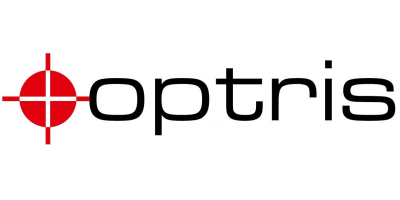
Abstract
Tempered glass is often referred to as “safety glass” for its ability to prevent spall and keep building occupants safe. Manufactured through a process of extreme heating and rapid cooling, tempered glass is much harder than standard glass. A way to determine the condition and functionality of a tempering glass furnace is to measure the glass temperature as it exits the furnace. Modern furnaces are equipped with infrared devices that continuously capture the infrared information. Historically, this was accomplished using a non-contact single point pyrometer or thermometer. Today, there are sophisticated solutions that provide a complete two-dimensional temperature map (thermal image) of the glass as it passes the gap between the furnace and the quenching zone.
First, it is important to understand some of the physics of how various glass compositions perform with non-contact measurement systems. Since different types of glass with different types of coating have different heat radiation characteristics the IR system must provide the operator with correct temperature information.
First physics challenge is how glass reflects energy at various wavelengths in the electromagnetic spectrum. To reduce reflections, which would affect temperature measurements, infrared devices for such glass measurement applications operate in wavelengths suited for most glass types. The graphic below gives the emissivity (the part of measured energy that comes from the material) curves for three different types of glass. On the x-axis is the wavelength (µm). To obtain more accurate temperature measurements, an infrared sensor requires a higher emissivity. As Figure 3 shows, the yellow highlighted area at 5.0µm and 7.9µm gives the highest emissivity values. That’s why all infrared devices designed for glass applications are operating at one of those spectral ranges.


The second physics aspect of glass and infrared sensors is whether it is coated glass for applications, such as Low-E glass. Just as we learned above, we want to have the highest “E” (emissivity) as possible. However, as the trade name suggests, this type of glass has “low-E”. Or low emissivity, making it very reflective. As soon as the glass is coated the emissivity can be reduced strongly.
The image below shows a line scan of a Low-E coated glass with an emissivity of 0.01. That means all thermal energy radiated from the glass surface the sensor “sees” only 1%. 99 % of what the sensor detects are reflections from the near environment.

In Figure 4 there is an example where heaters are installed under the ceiling above the furnace which are mirrored on top of the glass. Needless to mention that this line scan gives no useful information about the furnace conditions.
Most line scan systems can be equipped with reference sensors. In theory those additional pyrometers measure the glass temperature from the uncoated side underneath. The pyrometer detects the true temperature which means much less reflection and stable conditions. The temperature from the reference sensor is used to correct the IR-image generated from the top. The left image (Figure 5) below shows what the IR camera is measuring from the top without referencing. The right image (Figure 6) is calculated by the reference sensor temperature. The temperature in this case represents a 442⁰C difference between the thermal camera and the reference sensor.


This kind of system has its benefits but also its limitations. Each type of coating needs its specific settings. And still, especially for Low-E glass, those kinds of strong reflections are impossible to eliminate completely as to be seen in Figure 4.
To avoid the reflection issue caused by heaters, windows, lights, or other heat sources the measurement must be done from below the glass, where there are no coatings applied.

The first challenge for that approach is the limited space between the ground and furnace table. Most existing line scanners have a fixed focus and need to be installed in a defined distance to cover the whole width. Using two IR-cameras installed underneath the glass provides a new approach. With the combination of optics and ability to focus the optics at varying distances, the traditional fixed focus line scanner challenge is diminished.

Figure 7 is line scan created by the Optris Bottom-Up Glass Inspection System, using two PI 640i cameras. The principle is comprehensible but there are also some facts to consider and challenges to solve. Occasionally the glass breaks by entering the chilling area. In such a case the measurement equipment must be protected from the falling glass. Also, during the continuous operation, the equipment needs to be protected so that no dust will build up on the lenses, e.g. affect the temperature readings. To counteract these possible issues the Optris system comes with an integrated ultra-fast glass breakage detection, combined with Digitally controlled lens protection system (DCLP) including two shutters, one for each camera (Figure 8). They open only when the furnace door is open, and glass comes out.

In addition, a highspeed pyrometer is continuously monitoring the area just below the outcoming glass. In case of a glass breakage, it activates the fast-closing mode of the shutters. Due to the short shutter openings the dust contamination is reduced and thanks to the highspeed pyrometer even falling pieces of glass cannot harm the cameras and their optics.
The complete solution solves the challenge of determining the condition and functionality of a tempering glass furnace in a way that measures the glass temperature as it exits the furnace.
- Having two infrared imagers installed underneath the tempering line, which measure the temperature on the non-coated high emissivity side of the glass.
- The combination of two VGA imagers with a maximum field of view of 111° results in an excellent 1600 pixels scan line resolution on maximum 2 m (165 inches) scan width.
- An ultra-fast CTlaser 4M pyrometer with 90 µs exposure time combined with the digitally controlled lens protection system (DCLP) is a reliable safeguard for both infrared cameras in case of glass breakage




